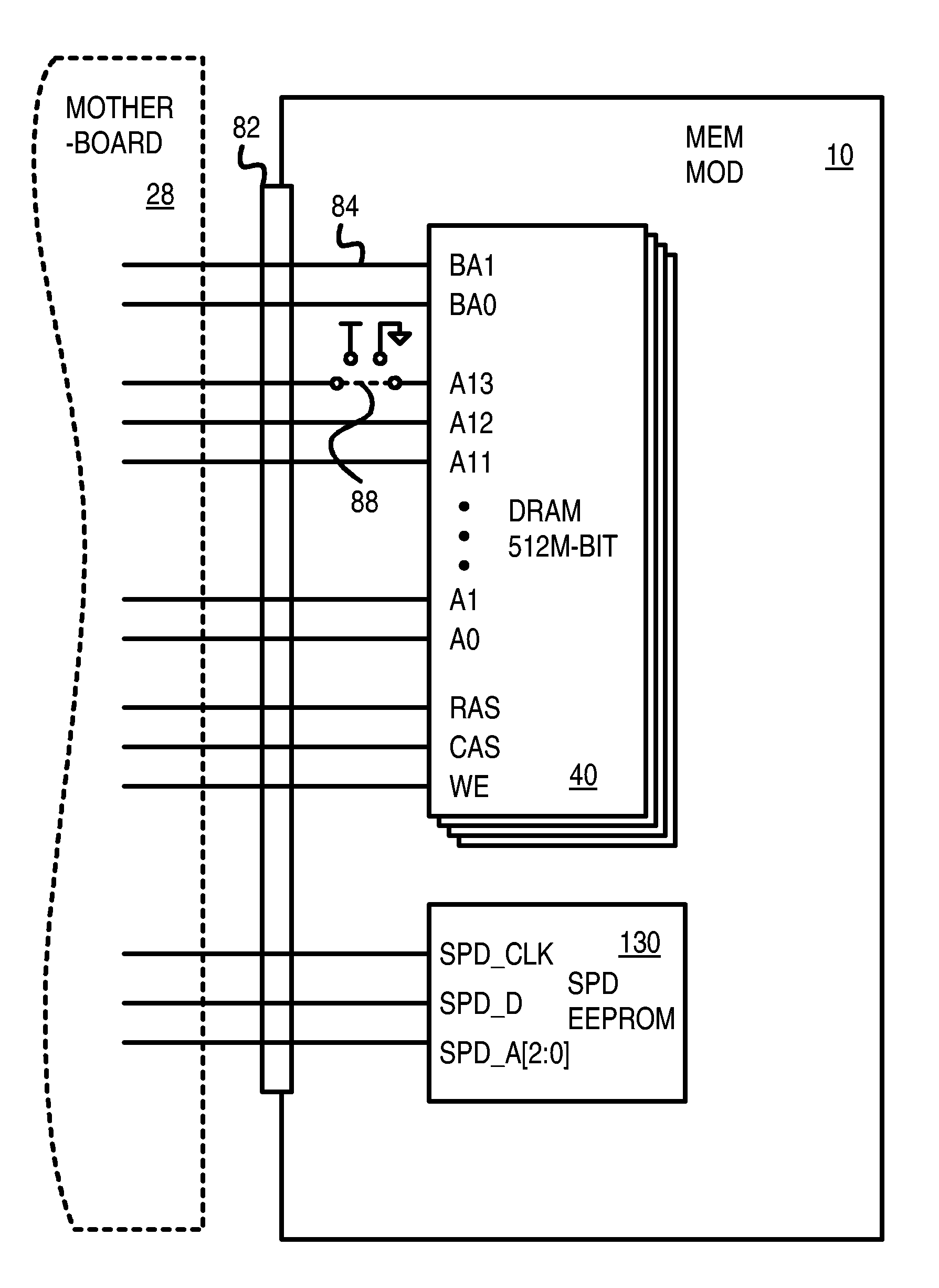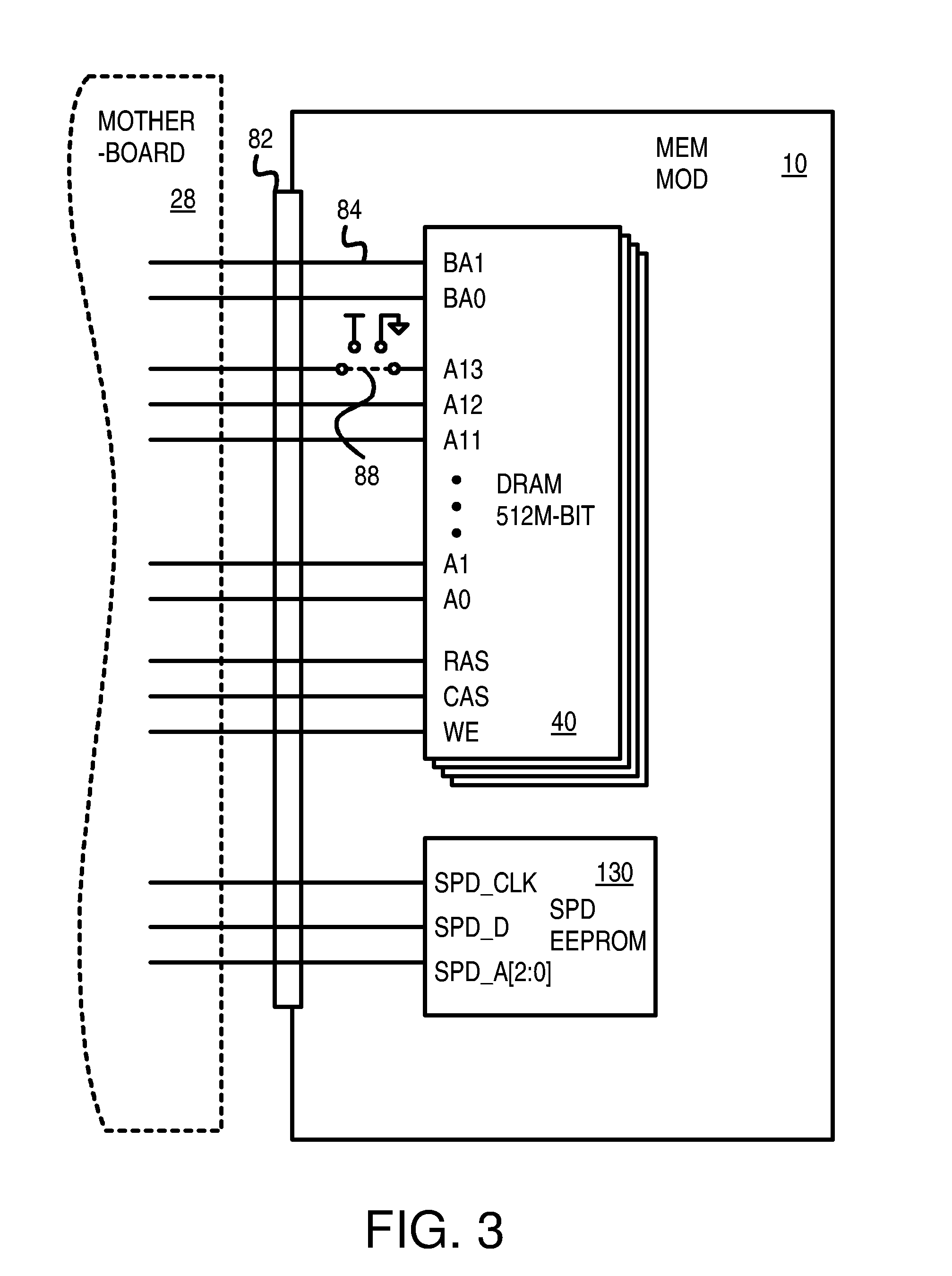Memory module with a defective memory chip having defective blocks disabled by non-multiplexed address lines to the defective chip
a memory module and chip technology, applied in the field of memory module manufacturing, can solve the problems of noisy test environment, wafer-sort test may not catch all defects, and manufacturing defects to be somewhat common
- Summary
- Abstract
- Description
- Claims
- Application Information
AI Technical Summary
Benefits of technology
Problems solved by technology
Method used
Image
Examples
Embodiment Construction
[0025]The present invention relates to an improvement in memory module manufacturing. The following description is presented to enable one of ordinary skill in the art to make and use the invention as provided in the context of a particular application and its requirements. Various modifications to the preferred embodiment will be apparent to those with skill in the art, and the general principles defined herein may be applied to other embodiments. Therefore, the present invention is not intended to be limited to the particular embodiments shown and described, but is to be accorded the widest scope consistent with the principles and novel features herein disclosed.
[0026]FIGS. 2A-B show a defect on a downgradable DRAM chip. In FIG. 2A, DRAM chip has an upper address bit A13 that divides the memory into two halves H1, H2. The halves H1, H2 may be logical halves rather than separate physical arrays on the DRAM die. When address A13=1, half H2 is selected, while when A13=0, half H1 is s...
PUM
 Login to View More
Login to View More Abstract
Description
Claims
Application Information
 Login to View More
Login to View More - R&D
- Intellectual Property
- Life Sciences
- Materials
- Tech Scout
- Unparalleled Data Quality
- Higher Quality Content
- 60% Fewer Hallucinations
Browse by: Latest US Patents, China's latest patents, Technical Efficacy Thesaurus, Application Domain, Technology Topic, Popular Technical Reports.
© 2025 PatSnap. All rights reserved.Legal|Privacy policy|Modern Slavery Act Transparency Statement|Sitemap|About US| Contact US: help@patsnap.com



